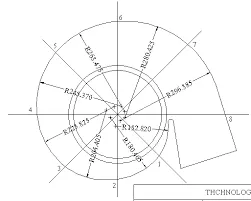Mobile:+86-311-808-126-83
Email:info@ydcastings.com
Stainless Steel Casting Cost and Factors Affecting Its Pricing
Understanding the Pricing of Stainless Steel Casting
Stainless steel casting is a process that involves pouring molten stainless steel into a mold to create intricate shapes and components for various applications. This manufacturing method is renowned for its strength, durability, and resistance to corrosion, making it a popular choice across many industries, including automotive, aerospace, food processing, and medical devices. However, one of the primary considerations for businesses and manufacturers looking to incorporate stainless steel castings into their products is the associated cost. In this article, we will explore the various factors that influence the price of stainless steel casting and why it can vary significantly across different markets.
Factors Influencing Stainless Steel Casting Prices
1. Raw Material Costs The price of stainless steel itself is a major determinant in casting costs. Stainless steel is primarily made of iron, chromium, and nickel, and fluctuations in the prices of these raw materials can significantly impact casting prices. For example, changes in market demand or supply chain issues can lead to increased costs, which are then passed down to the manufacturers.
2. Casting Method There are several methods of stainless steel casting, including sand casting, investment casting, and die casting. Each method has its own cost implications. Investment casting, for instance, is generally more expensive due to the intricate molds and the need for precise craftsmanship, while sand casting is more cost-effective for larger, simpler parts. The chosen method will influence the overall production costs.
3. Complexity of Design The complexity of the part being cast also plays a significant role in determining price. More complex designs that require intricate detailing or additional features demand more time and resources for both mold creation and the casting process itself. Thus, manufacturers may charge more for highly detailed or custom-designed stainless steel castings.
stainless steel casting price

4. Production Volume Economies of scale come into play when considering production volumes. Producing large quantities of a given part can lead to lower per-unit costs due to the shared expenses of mold making and setup. Conversely, smaller production runs often result in higher costs per unit. Companies need to balance their volume with their specific needs to optimize costs.
5. Finishing Processes After casting, parts may require additional finishing processes such as machining, polishing, or coating to meet specific performance or aesthetic requirements. These additional processes can add to the overall cost of the final product. Manufacturers must consider these finishing steps when estimating the final price of stainless steel designs.
6. Market Demand The state of the market can dramatically influence prices. During periods of high demand for stainless steel products, prices may increase due to competition and limited supply. Conversely, during economic downturns, demand may shrink, potentially lowering prices. Manufacturers must continuously monitor market trends to adjust their pricing strategies accordingly.
Conclusion
In summary, the pricing of stainless steel casting is influenced by a multitude of factors, including raw material costs, casting methods, design complexity, production volumes, finishing requirements, and market dynamics. For businesses, understanding these elements is crucial in making informed decisions about their manufacturing processes and budget allocations. As the industry continues to evolve, staying aware of market trends and innovations in casting technology will be essential for companies to efficiently manage costs while maintaining the quality and integrity of their stainless steel casting products. By considering these factors, manufacturers can better navigate the complexities of stainless steel casting pricing and enhance their competitive edge in the marketplace.
-
Understanding Metal Casting TechniquesNewsApr.02,2025
-
Understanding Exhaust Manifolds for Enhanced Engine PerformanceNewsApr.02,2025
-
The World of Metal FabricationNewsApr.02,2025
-
Key Components for Pump and Turbo EfficiencyNewsApr.02,2025
-
Essential Tools for Automotive Maintenance and RepairNewsApr.02,2025
-
Durable Valve Components for Effective Water ManagementNewsApr.02,2025











